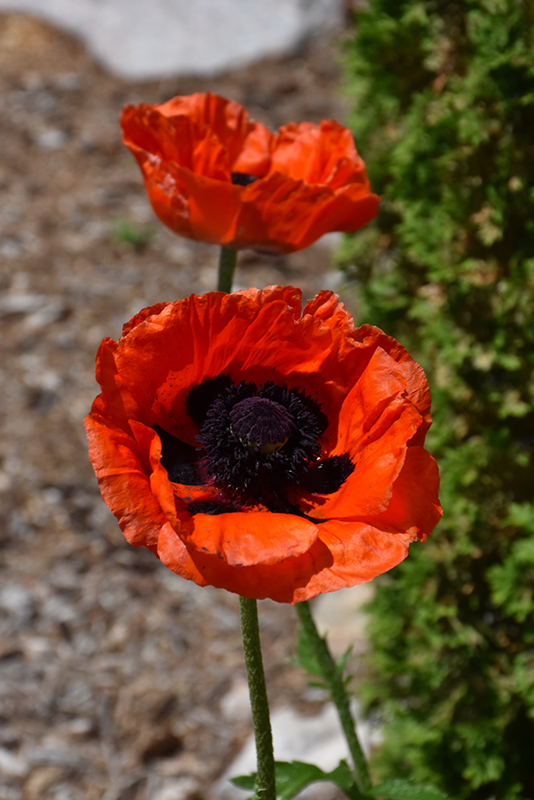Gertens Plant Finder
Prince Of Orange Poppy
Papaver orientale 'Prince Of Orange'
Height: 30 inches
Spacing: 18 inches
Sunlight:
![]()
![]()
Hardiness Zone: 3a
Other Names: Oriental Poppy
Brand: Gertens
Description:
This exquisite, clump forming selection produces huge, black centered, tangerine orange flowers from late spring to early summer, over bristly, toothed mid-green foliage; stunning when massed in mid-border plantings
Ornamental Features
Prince Of Orange Poppy features bold semi-double orange round flowers with gold overtones, deep purple eyes and a black blotch at the ends of the stems from late spring to mid summer. The flowers are excellent for cutting. Its deeply cut ferny leaves remain grayish green in color throughout the season.
Landscape Attributes
Prince Of Orange Poppy is an open herbaceous perennial with tall flower stalks held atop a low mound of foliage. Its relatively fine texture sets it apart from other garden plants with less refined foliage.
This plant will require occasional maintenance and upkeep, and should only be pruned after flowering to avoid removing any of the current season's flowers. Deer don't particularly care for this plant and will usually leave it alone in favor of tastier treats. Gardeners should be aware of the following characteristic(s) that may warrant special consideration;
- Self-Seeding
Prince Of Orange Poppy is recommended for the following landscape applications;
- Mass Planting
- Rock/Alpine Gardens
- General Garden Use
Planting & Growing
Prince Of Orange Poppy will grow to be about 24 inches tall at maturity, with a spread of 24 inches. When grown in masses or used as a bedding plant, individual plants should be spaced approximately 18 inches apart. It grows at a fast rate, and under ideal conditions can be expected to live for approximately 5 years. As an herbaceous perennial, this plant will usually die back to the crown each winter, and will regrow from the base each spring. Be careful not to disturb the crown in late winter when it may not be readily seen! As this plant tends to go dormant in summer, it is best interplanted with late-season bloomers to hide the dying foliage.
This plant does best in full sun to partial shade. It prefers dry to average moisture levels with very well-drained soil, and will often die in standing water. It is not particular as to soil type or pH. It is somewhat tolerant of urban pollution, and will benefit from being planted in a relatively sheltered location. Consider applying a thick mulch around the root zone in winter to protect it in exposed locations or colder microclimates. This is a selected variety of a species not originally from North America. It can be propagated by cuttings; however, as a cultivated variety, be aware that it may be subject to certain restrictions or prohibitions on propagation.
Buy Now on Gertens.com:



